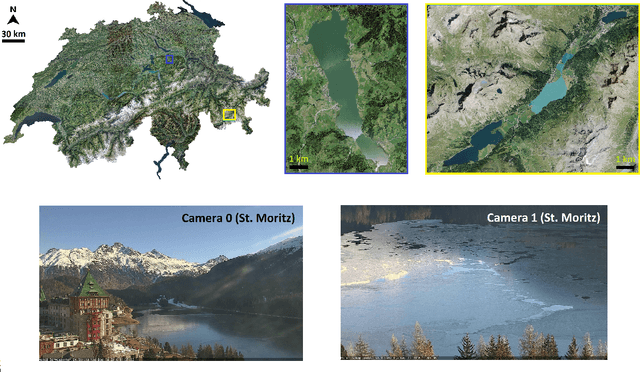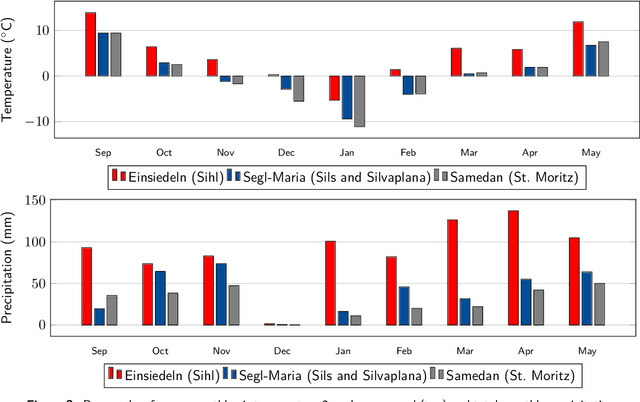Ice Monitoring in Swiss Lakes from Optical Satellites and Webcams using Machine Learning
Paper and Code
Oct 27, 2020



Continuous observation of climate indicators, such as trends in lake freezing, is important to understand the dynamics of the local and global climate system. Consequently, lake ice has been included among the Essential Climate Variables (ECVs) of the Global Climate Observing System (GCOS), and there is a need to set up operational monitoring capabilities. Multi-temporal satellite images and publicly available webcam streams are among the viable data sources to monitor lake ice. In this work we investigate machine learning-based image analysis as a tool to determine the spatio-temporal extent of ice on Swiss Alpine lakes as well as the ice-on and ice-off dates, from both multispectral optical satellite images (VIIRS and MODIS) and RGB webcam images. We model lake ice monitoring as a pixel-wise semantic segmentation problem, i.e., each pixel on the lake surface is classified to obtain a spatially explicit map of ice cover. We show experimentally that the proposed system produces consistently good results when tested on data from multiple winters and lakes. Our satellite-based method obtains mean Intersection-over-Union (mIoU) scores >93%, for both sensors. It also generalises well across lakes and winters with mIoU scores >78% and >80% respectively. On average, our webcam approach achieves mIoU values of 87% (approx.) and generalisation scores of 71% (approx.) and 69% (approx.) across different cameras and winters respectively. Additionally, we put forward a new benchmark dataset of webcam images (Photi-LakeIce) which includes data from two winters and three cameras.
 Add to Chrome
Add to Chrome Add to Firefox
Add to Firefox Add to Edge
Add to Edge